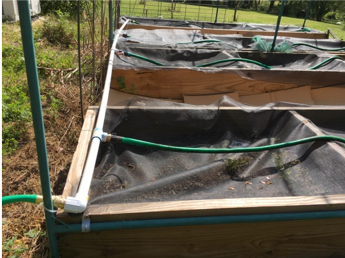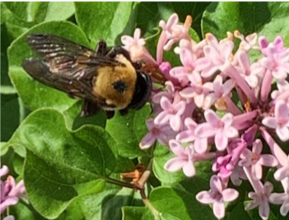Spring in the Garden – a Bit Early
go.ncsu.edu/readext?676387
en Español / em Português
El inglés es el idioma de control de esta página. En la medida en que haya algún conflicto entre la traducción al inglés y la traducción, el inglés prevalece.
Al hacer clic en el enlace de traducción se activa un servicio de traducción gratuito para convertir la página al español. Al igual que con cualquier traducción por Internet, la conversión no es sensible al contexto y puede que no traduzca el texto en su significado original. NC State Extension no garantiza la exactitud del texto traducido. Por favor, tenga en cuenta que algunas aplicaciones y/o servicios pueden no funcionar como se espera cuando se traducen.
Português
Inglês é o idioma de controle desta página. Na medida que haja algum conflito entre o texto original em Inglês e a tradução, o Inglês prevalece.
Ao clicar no link de tradução, um serviço gratuito de tradução será ativado para converter a página para o Português. Como em qualquer tradução pela internet, a conversão não é sensivel ao contexto e pode não ocorrer a tradução para o significado orginal. O serviço de Extensão da Carolina do Norte (NC State Extension) não garante a exatidão do texto traduzido. Por favor, observe que algumas funções ou serviços podem não funcionar como esperado após a tradução.
English
English is the controlling language of this page. To the extent there is any conflict between the English text and the translation, English controls.
Clicking on the translation link activates a free translation service to convert the page to Spanish. As with any Internet translation, the conversion is not context-sensitive and may not translate the text to its original meaning. NC State Extension does not guarantee the accuracy of the translated text. Please note that some applications and/or services may not function as expected when translated.
Collapse ▲The sun is shining, the temperature is balmy and weather predications indicate they will be all week. Flowers are blooming, and shrubs are leafing out even though some of them got bitten from a deceptive warm turn followed by below-freezing temps a few weeks ago.
The last few weeks have been surreal, unsettling and sometimes scary for many of us. I would have been lost without the relief of my garden. Truly, technology has allowed us to stay connected while we stay apart for health concerns however daunting a challenge some of us find this new learning curve to be. However, there is nothing like reconnecting to the basics of the natural world to keep one “grounded”.
Actually, this homebound life has allowed me to take on the important garden tasks from last year that suffered from my procrastination. Like building the automated

Irrigation in raised beds
irrigation system for my raised bed garden. Netting for seedling protection too. It wasn’t rocket science, or really difficult and didn’t take long to do really – it just took “gettin’ after it”. So I can take one or two more guilty as charged, “Do As I Say, Not As I Do” things off the list. Another perk for Horticultural Therapy – guilt reduction.
Some Tips To Temper Your Cabin Fever:
- Take a deep breath, slow down and reconnect with your garden. Making a To-Do list helps a lot to keep on track and stay productive.
- Bed preparation to receive your seedlings. Weeding is a really good way to get frustrations out, especially early in the morning when the ground is soft, the air is moist, no one else is up and you can call those weeds every nasty name you can think of while you dig them up by the roots and toss them into the bucket. That’s a real “Power Meeting” that I can get into!
- Notice Nature. While you are out in the garden, really see. Slow down and look closely. We’re surrounded by nature. Did you catch that flash of yellow and red on that blackbird’s wing flying by? Yup – Redwing blackbird in the backyard. Read more about the wildlife you’ll see: Extension Gardener Handbook Chapter 20 – Wildlife.
- Now that you’re putting out “food” in your garden, that will soon be coming up be on the lookout for pests. Where there is food – there will be food-eaters. Get to know your beneficial insects as pests are often followed

Bee pollinating
closely by predators. Extension Gardener Handbook Chapter 4 – Insects See food note above!
- Spraying away the problem doesn’t always work and can create chemical resistance in the pest population. There isn’t resistance to being lunchmeat unless it’s to be somewhere else. Which is the end-result gardeners want.
- Get the pruning done that you missed last spring. Anything dead, diseased or dying can be removed at any time of the year. Be sure your cutting tools are sharp and disinfected and use the right tool for the right sized job to prevent injury to yourself, your tools and your plants. Don’t know which to use, check here: Tools to Make the Cut
Do you enjoy reading about gardening tips and tricks, beauty or BOLOs? Extension Gardener can send you an email every time there is new content to share. Enter your email address on our sign up page and you’ll receive a confirmation email with a link to get you activated.
Minda Daughtry is the Horticulture Agent for North Carolina Cooperative Extension in Lee County.




